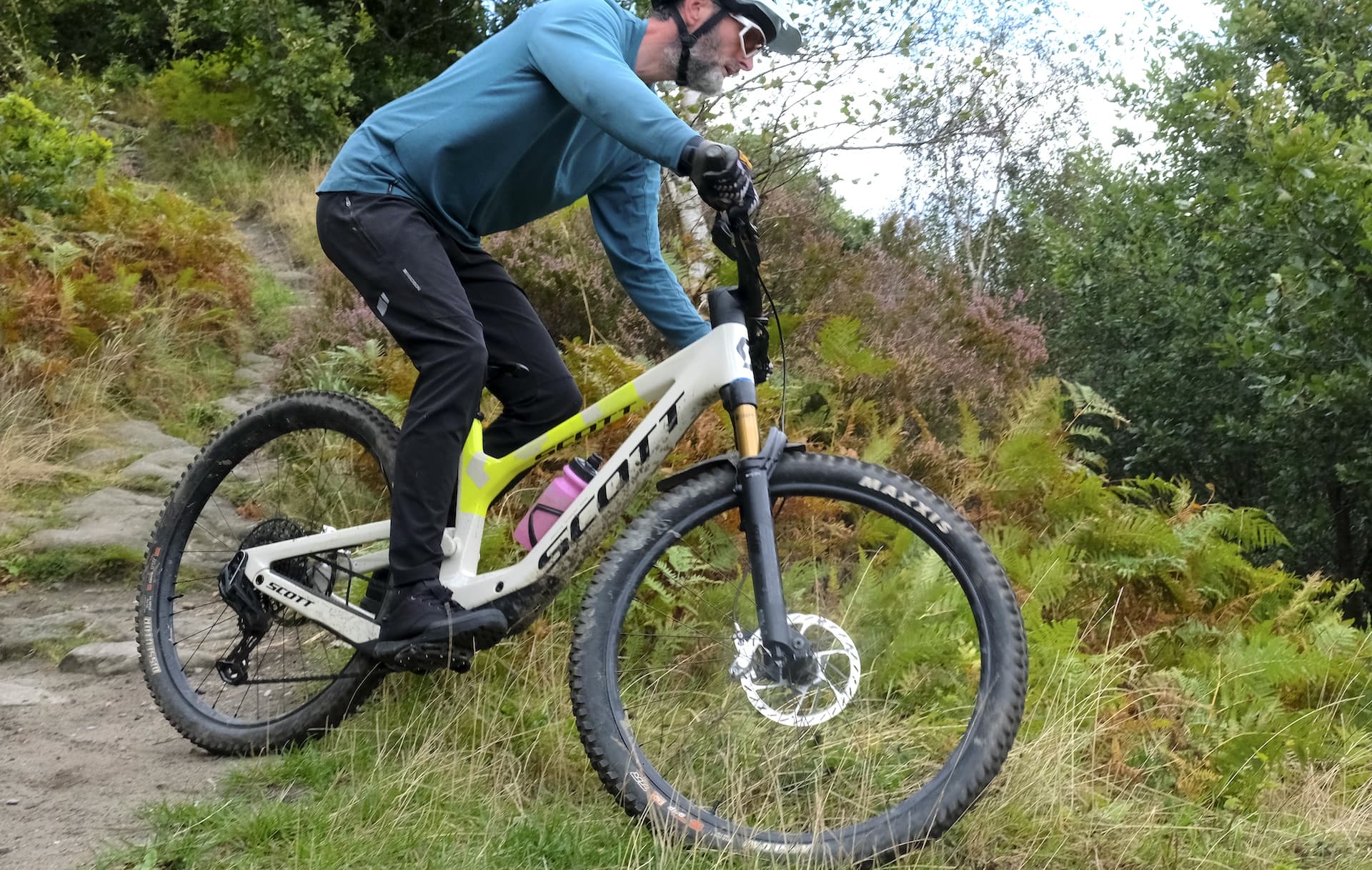There’s a lot going on with the new Scott Ransom. But in a nutshell it is a mountain bike with 170mm of travel, progressive geometry, and a 6-bar rear suspension layout.
The Scott Ransom comes with 29in wheels as standard, but if you fancy a mullet, it can be ridden with a 27.5 rear wheel setup via a flip-chip in the chainstay.
Carbon or alloy or both?
The one we’re featuring here is the top tier 900 RC model. It is the only Ransoms that is fully carbon – front and rear triangles – and as you can see, it has high end uncompromised build spec.
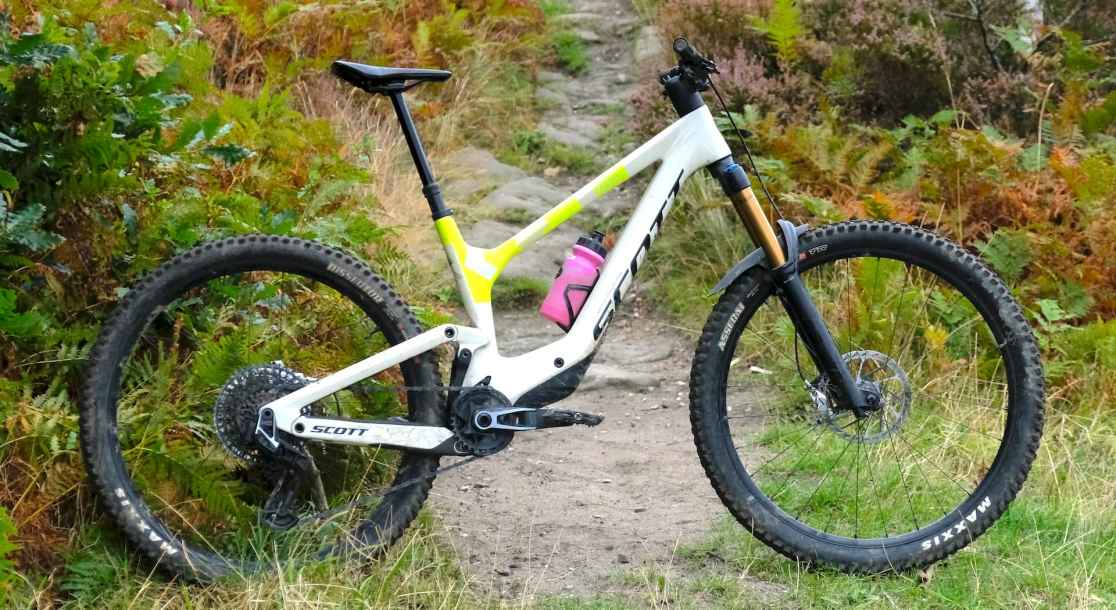
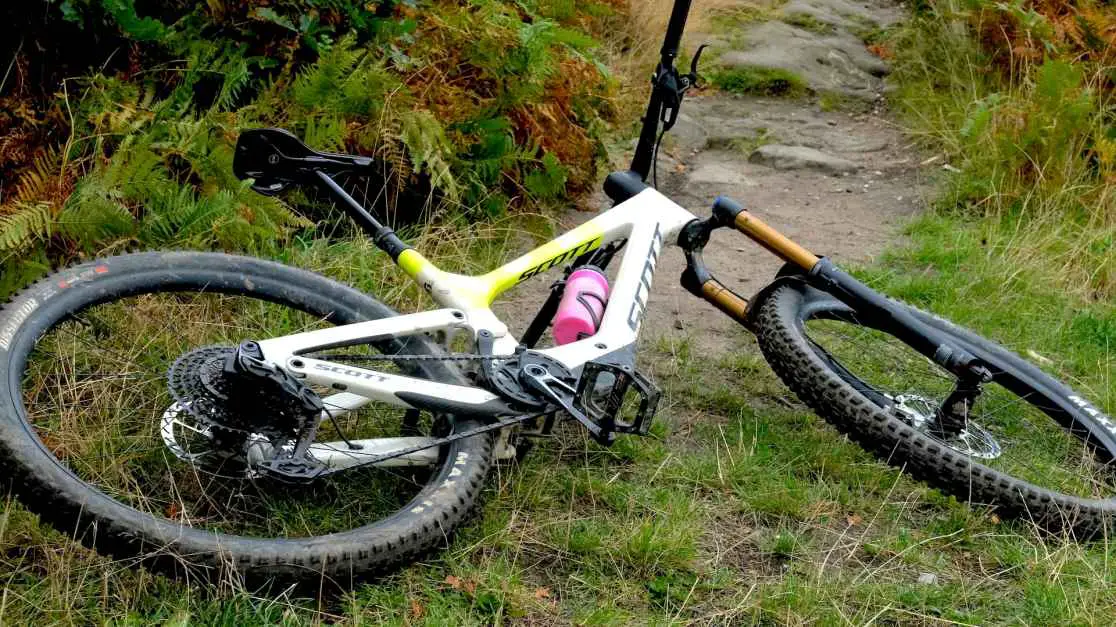
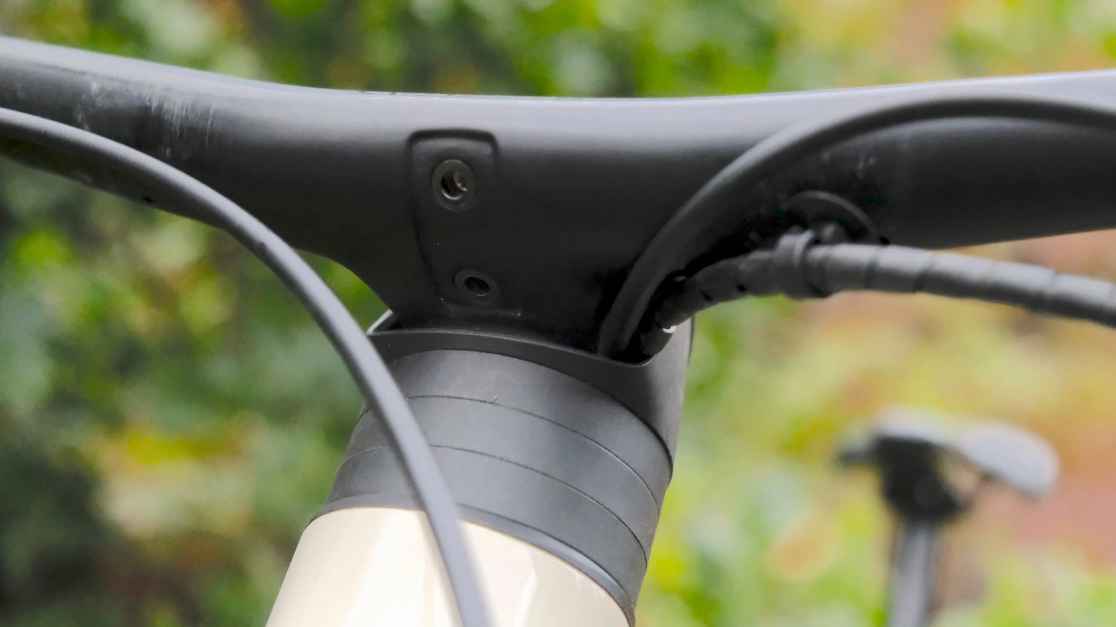

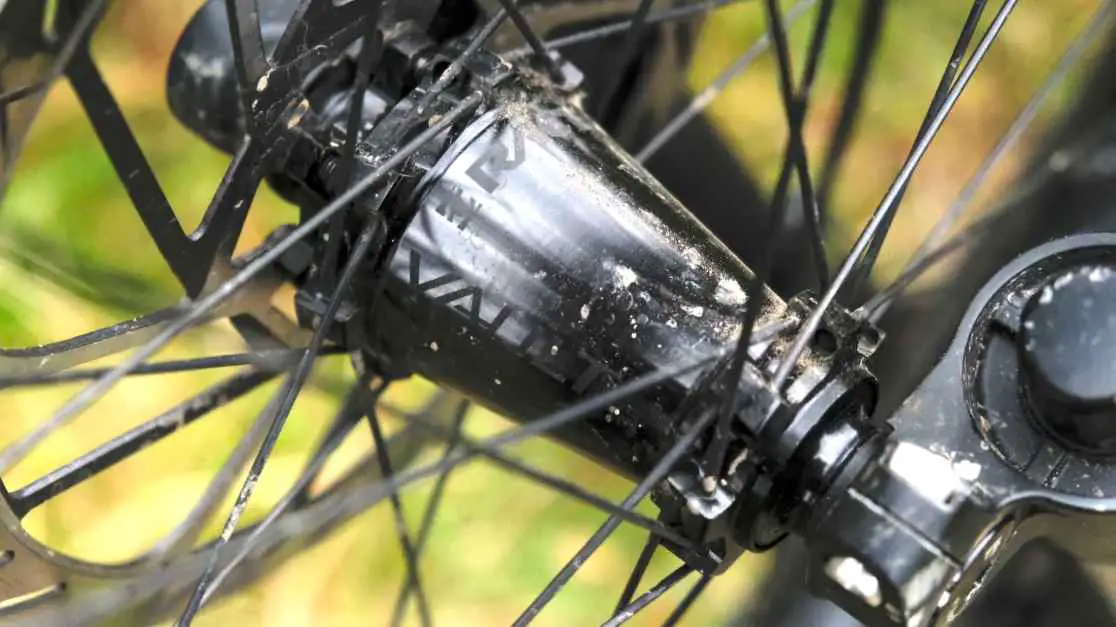
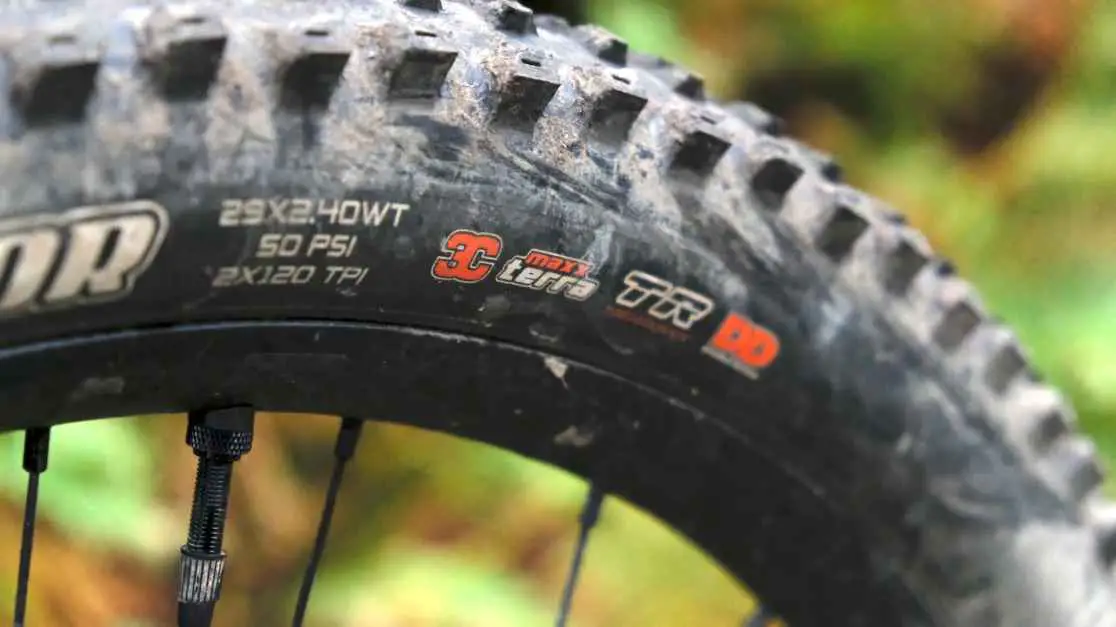
There are a total of five models in the Ransom range. The four other Ransoms (910, 920, 930 and women’s specific 920 Contessa) are a mix of a carbon main frame with an alloy swing arm. We’ve listed the whole range at the end of this feature by the way.
Much like the revamped Scott Spark and Scott Genius (our 2023 Bike Of The Year), the new Scott Ransom has moved to a ‘hidden’ rear shock design, where the rear shock is contained in the lower paert of the down tube. Unlike the Spark and Genius, the Ransom’s rear shock is positioned horizontally as opposed to vertically.
TracLoc control
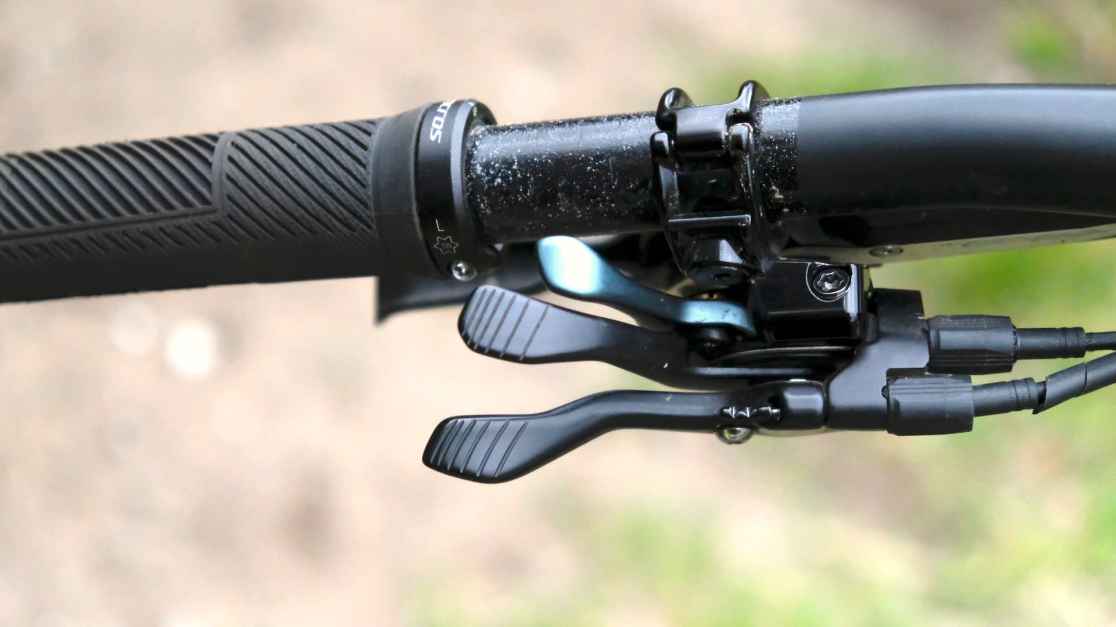
Much as with other Scott mountain bikes, the new Ransom has a trick up its sleeve. Or rather, on its handlebar. This item is the TracLoc remote. It adjusts the suspension feel. It only controls the rear shock. It is not attached to the fork at all. That rear shock is a custom version of a Fox Float X called the Float X NUDE. It’s just as serviceable as the regular Float X.
With the TracLoc you can switch the rear shock through three different behaviours.

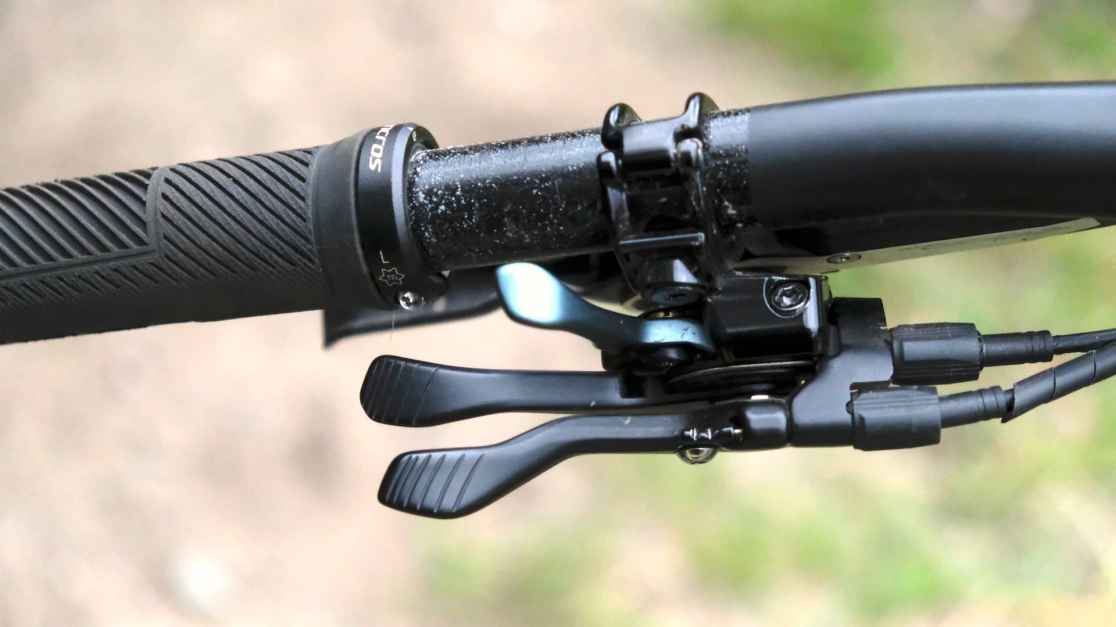
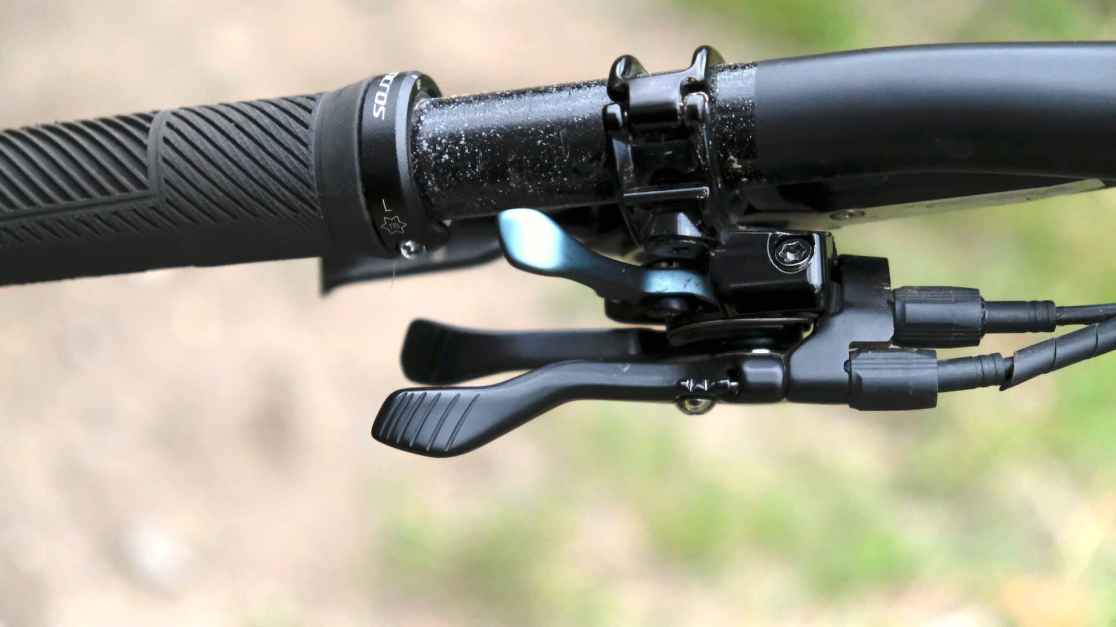
Position one is fully open. Actually, ‘fully open’ is not technically the correct term. You can set the shock’s rebound and low speed compression circuits as with a regular shock. Position one is this setting.
Position two closes off an extra air chamber that the Float X NUDE has, which is essentially like suddenly sticking a gigantic volume spacer in the rear shock. It firms things up significantly; reducing available travel to around 130mm and also making the bike ride higher in its dynamic sag.
Position three increases compression damping. You could call it a lockout but it’s not technically locked-out in the traditional sense; there’s still a bit of movement possible. It’s just really, really firmed up.
The 6-bar science bit
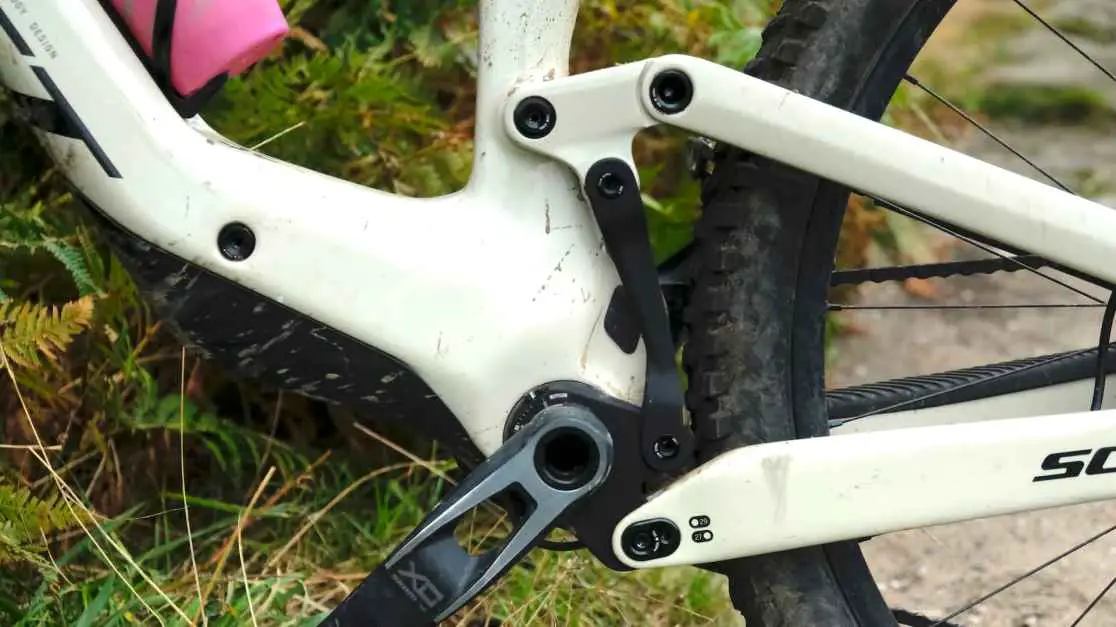
The Scott Ransom’s rear suspension design is called a 6-bar. Essentially there are six rigid links in the array.
To compare to other existing designs… A single pivot bike is a 2-bar design (the front triangle is one bar, the swing arm is another bar). Horst Link bikes are 4-bars (with the bars being: front triangle, chainstay, seat stay and rocker). Virtual pivot bikes are also actually 4-bars (with the bars being: front triangle, rear triangle, an upper linkage and a lower linkage).
The Ransom has another pair of bars introduced into the mix. You can think of it as a Horst Link 4-bar but with a bar from the top rocker meeting another bar that rotates around the bottom bracket. The chain stay bar also attaches to this around-the-bottom-bracket bar.
It’s one of the more complicated systems out there. So why has Scott done it this way? Ultimately it’s a design that gives them the suspension kinematic that they want whilst preserving the bike’s overall practical packaging.
Whilst it may be possible to get this suspension kinematic via a 4-bar design (similar anti squat, anti rise, leverage ratio figures and so on) it wouldn’t be possible to have the frame look like this. There would be numerous compromises and issues. The dropper post insertion would be very limited. As would the standover. You’d also be unlikely to fit a full-size water bottle in the front triangle.
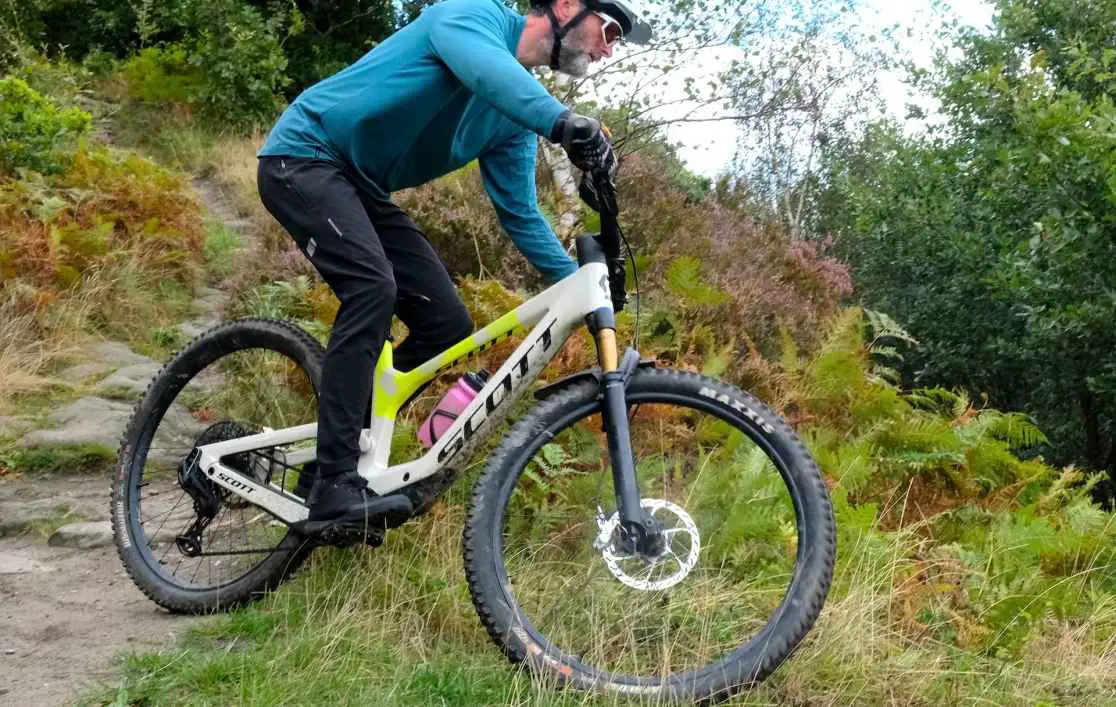
Hidden shock
And you wouldn’t be able to have the ‘hidden’ shock. Why have a ‘hidden’ shock at all?
We’re sure there are some pure aesthetic reasons. It just looks cool. And unique. Which is something that is harder to achieve these days as more and more mountain bikes start to look the same. But there are other reasons for containing the shock.
Hiding the rear shock away keeps it away from the filth of the outside world. Which is particularly relevant in the UK! Not having the rear shock continually exposed to the elements will have a genuine effect on the shock’s longevity. As well as the seals of the shock itself, the bearings in the eyelet of the shock that will last exponentially longer due to them being protected from regular dousings.
In terms of the potential extra faff involved with having a hidden shock. You have to ask yourself how often do you actually access the rear shock once you’ve initially set it up? Not very many.
Not only that, we can genuihnely say that when you do need to adjust or set up the rear shock, it’s easier than you may think. The cover on the underside of the down tube pops on and off very positively. No tools. No faff. Have a quick dial twiddle and click it back on.
Oh and this hatch for the rear shock access is also where you’ll find the internal frame storage.
What about sag? When it comes to setting sag, it’s not done via an O-ring on the rear shock. There’s an easy to read sag indicator built into the main BB pivot housing.
Let’s get nerdy for a minute. Sag measured via an O-ring on a rear shock is often inaccurate. This is because the amount of shock stroke is not equally commensurate with the amount of rear travel at the wheel. eg. 30% sag at the shock can often mean nearly 40% sag into actual wheel travel. Why? Links and levers. Ultimately, the sag displayed via the Scott Ransom’s little dial is Actual Sag. It’s more accurate this way.
Kinematic
The leverage ratio is 25% and – looking at the curve of how it is delivered – the Ransom’s 6-bar is fairly leveragey around sag point but quickly ramps up and then plateaus. What does that actually mean? It means it’ll be supple at sag for good traction but quickly offer up some support in the midstroke for responsive bike handling at velocity.
Anti-squat numbers never dip below 100%. The range goes from 104 to 139% throughout the gearing range. Again, what does this mean? It means it’s an efficient pedaler in all gears.
The anti-rise is perhaps the most interesting number. Anti-rise is how much the action of braking compresses the suspension. The anti-rise on the Scott Ransom ranges from 58 to 71%. This is a rare quality on a mountain bike. Usually the anti-rise figure drops, and drops severely once into the travel. What does this all mean to the rider? The suspension stays active and supple even with the anchors slammed on.
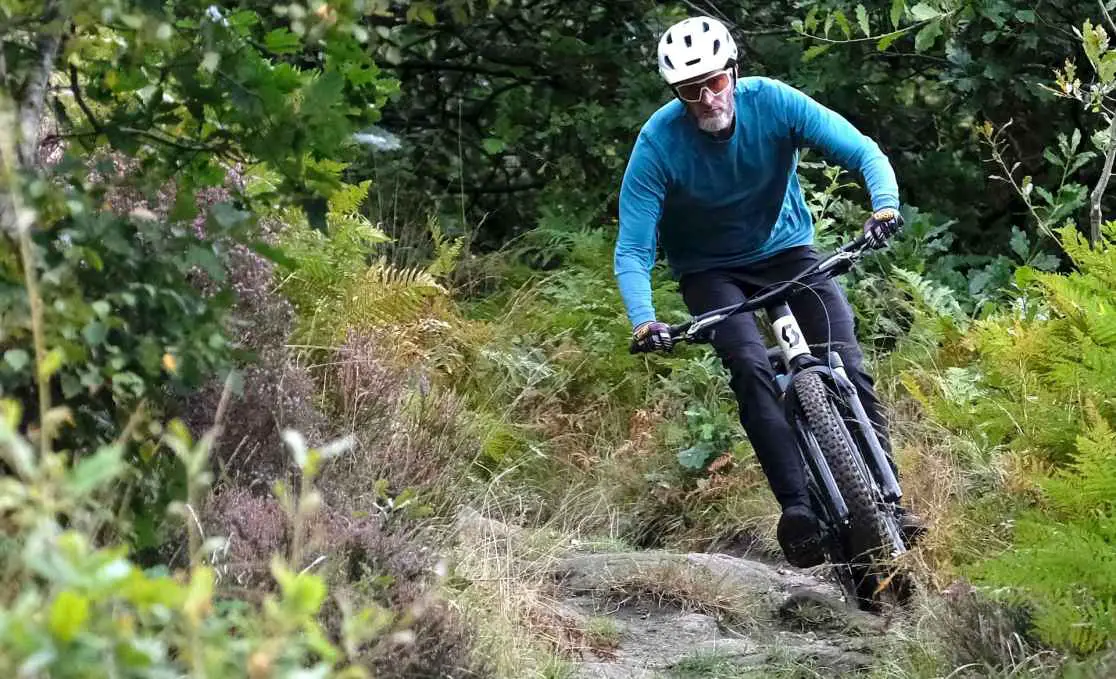
What genre of mountain bike is it?
As stated, the Scott Ransom is a full suspension mountain bike with 170mm of travel at each end. What genre of mountain bike does that make the Ransom?
In previous years a 170mm bike would be purely an enduro bike. Possibly a bikepark bike. We’d say that the new Scott Ransom can definitely still be pressed into enduro race duties. But it’s rather too, shall we say, ‘sophisticated’ to be a bikepark shredder. Yet we principally think it behaves perfectly well as a trail bike. Dare we say ‘all mountain’ bike?
Or maybe Super Trail bike?
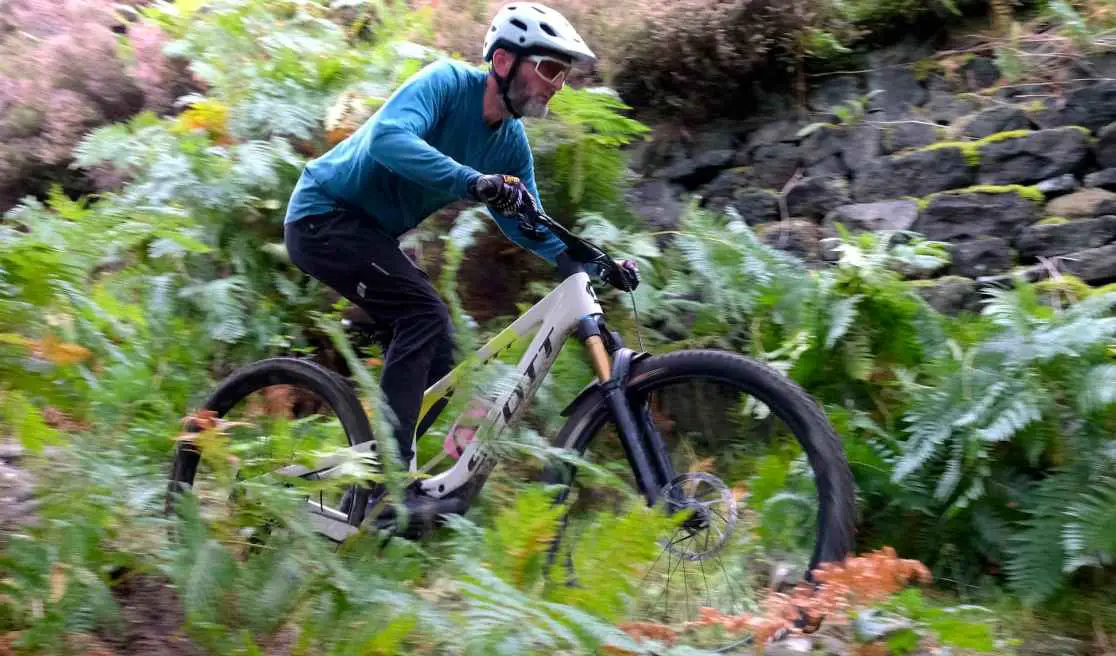
To some ears, a 170mm travel trail bike may sound rather OTT but honestly, with modern bike geometry and sorted suspension it really is amazing how normal a 170mm bike feels when just… riding around.
We’d make a strong argument that the Ransom is a genuine do-it-all mountain bike. Whilst it ain’t going to be ideal on a typical XC race course, it will be perfectly adept at everything from marathon-XC type ‘old skool’ riding right through to full-on big mountain enduro racing.
A well-executed long travel mountain bike can do things that short and mid-travel mountain bikes cannot do. It does not really work the other way around in iour experience. It’s bikes like the Scott Ransom that are the ‘quiver killers’ in the real world, not mid-travel machines with burlier parts swapped in.
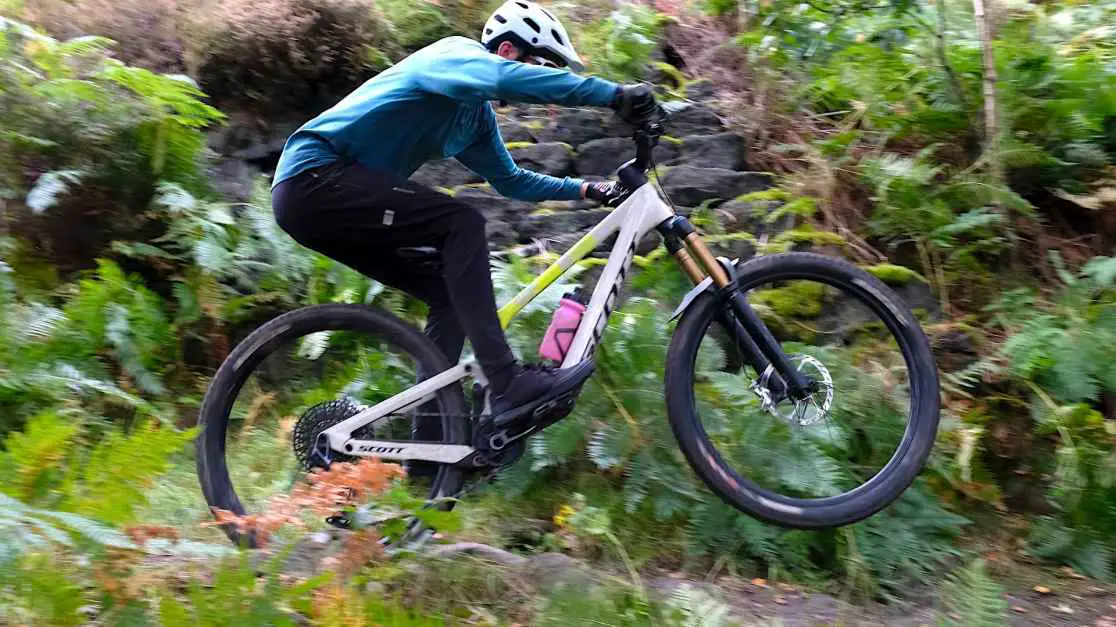
Scott Ransom geometry
| S | M | L | XL | |
| Head angle | 63.8° | 63.8° | 63.8° | 63.8° |
| Head tube length | 95mm | 100m | 115mm | 125mm |
| Effective top tube | 569.9mm | 598.7mm | 624.4mm | 649.1mm |
| Standover | 719.2mm | 725.4mm | 736.7mm | 755.3mm |
| BB drop | 25mm | 25mm | 25mm | 25mm |
| BB height | 350mm | 350mm | 350mm | 350mm |
| Wheelbase | 1,206.6mm | 1,238.8mm | 1,270.4mm | 1,299.8mm |
| Seat tube length | 380mm | 410mm | 440mm | 470mm |
| Seat angle | 77.0° | 77.2° | 77.4° | 77.6° |
| Chainstay length | 440mm | 440mm | 440mm | 440mm |
| Reach | 428mm | 458mm | 483mm | 508mm |
| Stack | 614.8mm | 619.3mm | 632.8mm | 641.7mm |
Scott Ransom range
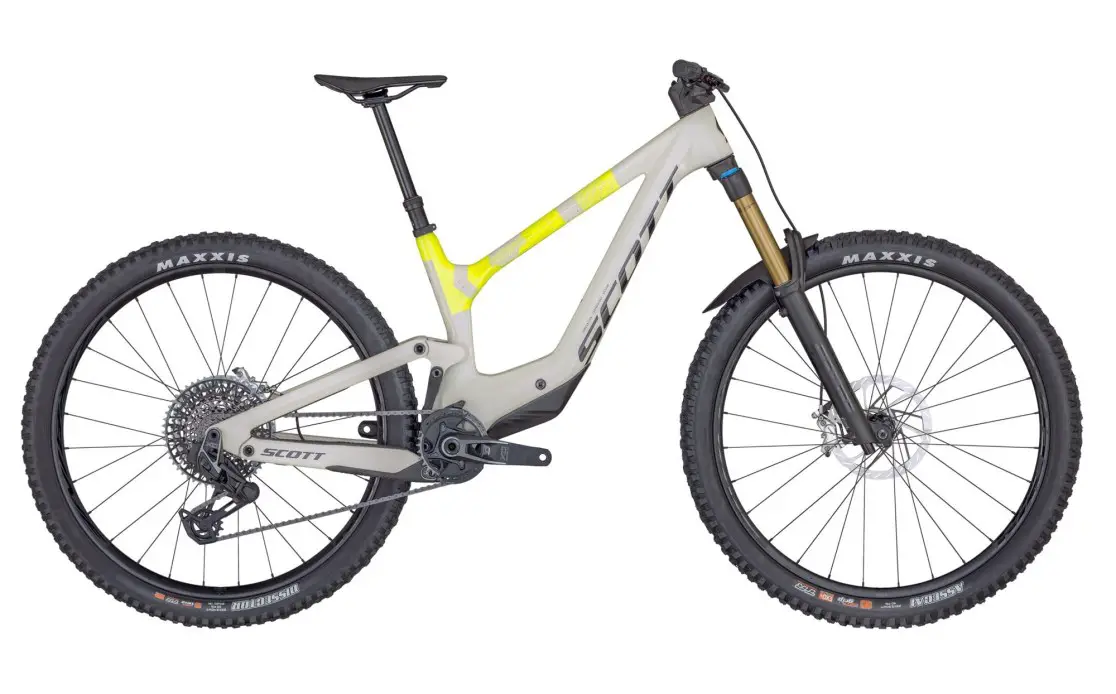
Scott Ransom RC 900
- Ransom HMX Frame
- FOX 38 Grip2 Factory 170mm Fork
- FOX FLOAT X Nude, TracLoc, 170mm
- SRAM X0 AXS Transmission 12Sp
- SRAM Code 4 Piston Disc Brakes
- Maxxis EXO+/DD Tyres
- SRP £9,799
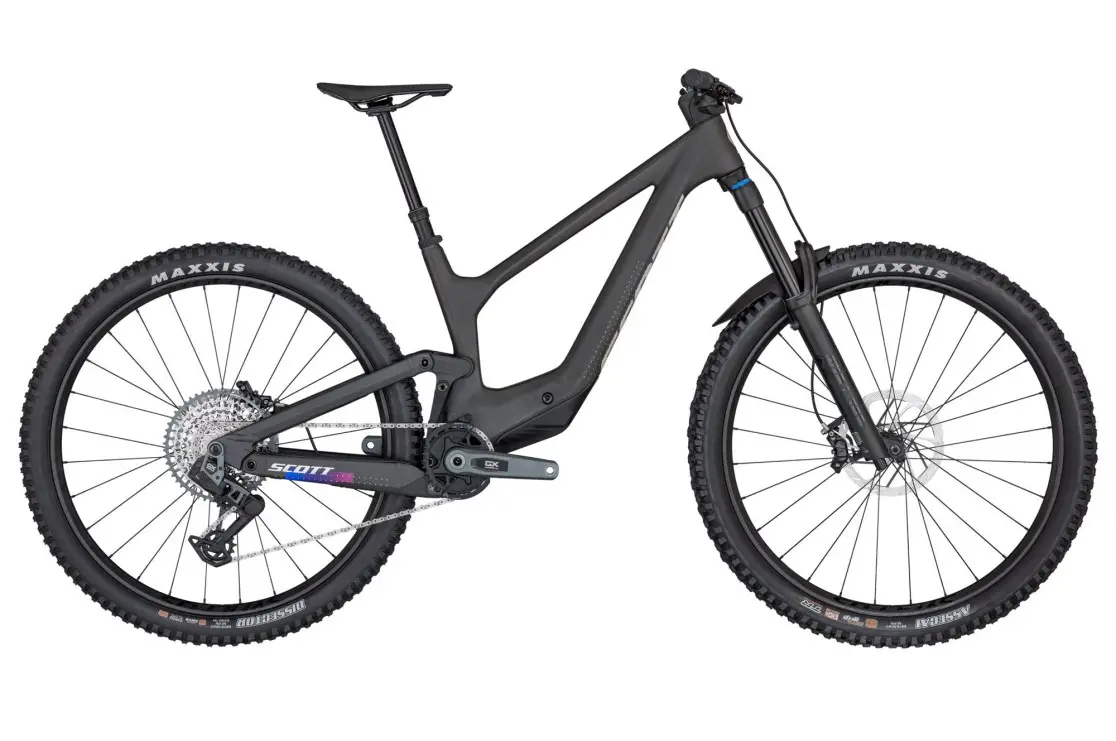
Scott Ransom 910
- Ransom Carbon HMF-Alloy Frame
- FOX 38 Grip2 Perf. Elite 170mm Fork
- FOX FLOAT X Nude, TracLoc, 170mm
- SRAM GX AXS Transmission 12 Sp
- SRAM Code 4 Piston Disc Brakes
- Maxxis EXO+/DD Tyres
- SRP £7,799

Scott Contessa Ransom 910
- Ransom Carbon HMF-Alloy Frame
- FOX 38 Grip2 Perf. Elite 170mm Fork
- FOX FLOAT X Nude, TracLoc, 170mm
- SRAM GX AXS Transmission 12 Sp
- SRAM Code 4 Piston Disc Brakes
- Maxxis EXO+/DD Tyres
- SRP £7,799
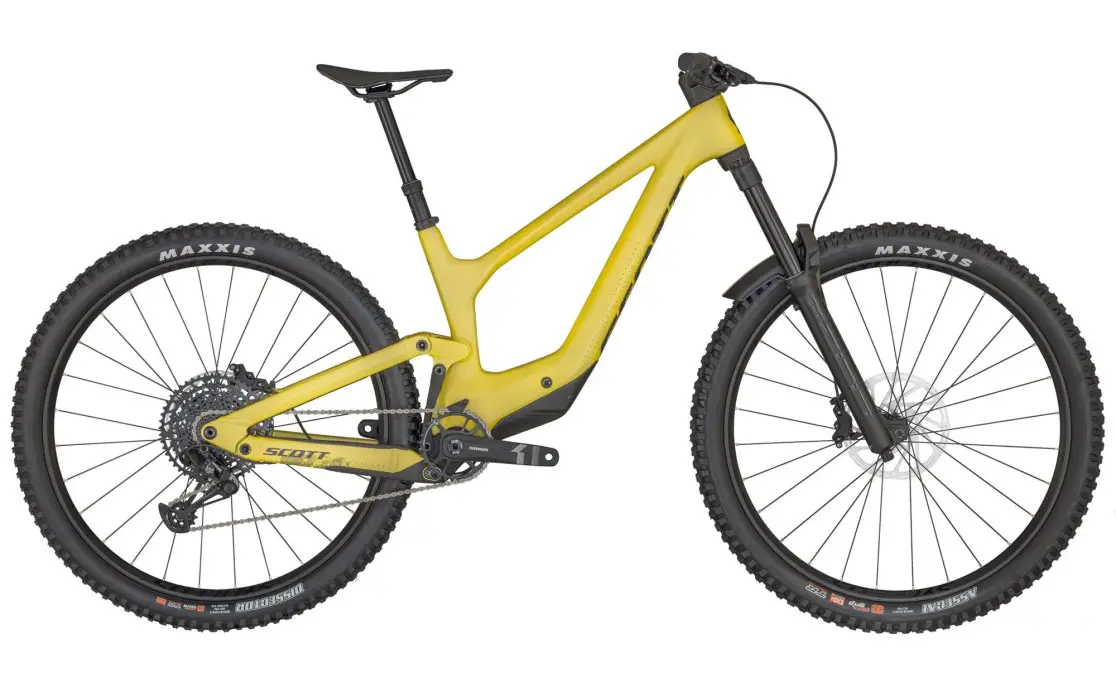
Scott Ransom 920
- Ransom Carbon HMF-Alloy Frame
- RockShox Zeb Select+ 170mm Fork
- FOX FLOAT X Nude, TracLoc, 170mm
- SRAM NX Eagle 12 Speed
- SRAM DB8 4 Piston Disc Brakes
- Maxxis EXO+/DD Tyres
- SRP £5,899
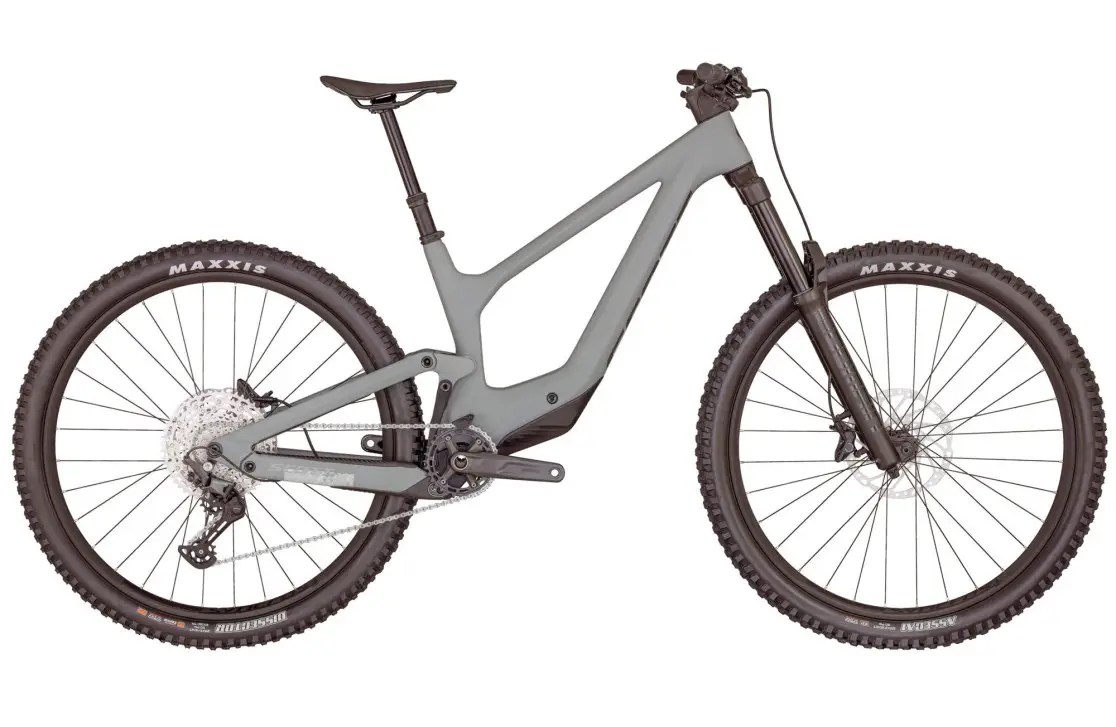
Ransom 930
- Ransom Carbon HMF-Alloy Frame
- RockShox Domain R 170mm Fork
- FOX FLOAT X Nude, TracLoc, 170mm
- Shimano Deore 12 Speed
- Shimano 4 Piston Disc Brakes
- Maxxis EXO Tyres
- SRP £5,099
